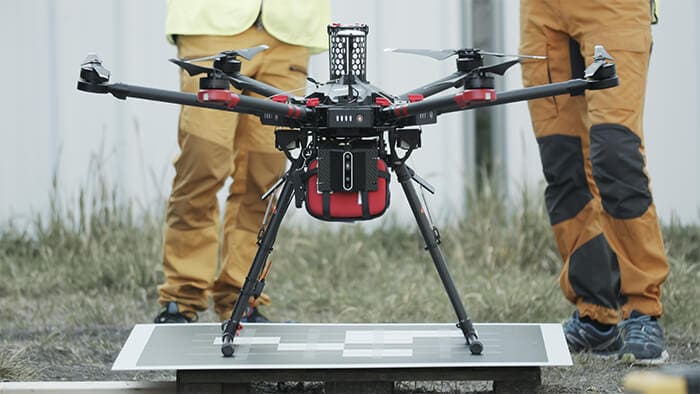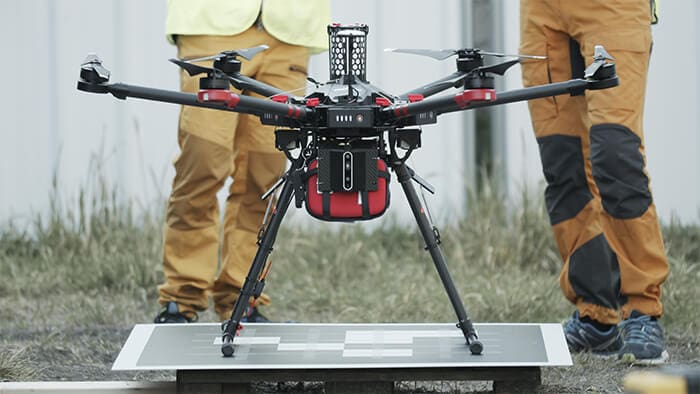Intel RealSense technology can make every device self aware, opening up a world of possibilities for how we interact with the digital world. Imagine devices that understand their surroundings, adapt to changing environments, and even anticipate our needs. This technology empowers a new era of intelligent machines, moving beyond simple input and output to a level of nuanced understanding.
This exploration delves into the fascinating concept of self-awareness in devices, focusing on the capabilities of Intel RealSense technology. We’ll examine how sensors, data processing, and algorithms work together to create devices that are truly perceptive and responsive. The discussion will encompass various applications, design considerations, challenges, and future directions, ultimately painting a picture of the exciting potential of self-aware devices.
Defining “Self-Awareness” in Devices
Self-awareness, a cornerstone of human intelligence, is now being explored in the realm of electronic devices. This isn’t about sentience; rather, it’s about a device’s ability to understand its own state, surroundings, and capabilities. Intel RealSense technology, with its depth sensing and image processing capabilities, is a key enabler in this evolution, paving the way for devices that can “see” and “understand” themselves within their environments.This understanding extends beyond basic sensor readings.
A self-aware device can interpret these readings in context, making informed decisions based on its current condition and the environment. Imagine a robotic arm adjusting its grip pressure in real-time based on the object it’s handling, or a drone autonomously recognizing and avoiding obstacles in its flight path. These are examples of self-awareness in action, enabling more intuitive and adaptable interactions.
Levels and Degrees of Self-Awareness
Self-awareness in devices exists on a spectrum, ranging from rudimentary to sophisticated. Basic levels involve recognizing simple states like “powered on” or “battery low.” More advanced forms entail understanding complex interactions with the environment, like recognizing the shape and texture of an object or adjusting its position in response to changes in its surroundings.
Key Components for Self-Awareness
Several crucial components are essential for a device to achieve self-awareness. First, sophisticated sensors like Intel RealSense cameras are necessary for gathering data about the environment and the device’s own physical state. Secondly, robust algorithms and machine learning models are required to interpret the sensor data. These models allow the device to “learn” about its environment and adjust its behavior accordingly.
Finally, effective decision-making processes are essential for responding appropriately to the gathered information.
Self-Awareness Mechanisms Comparison
| Mechanism Type | Description | Strengths | Weaknesses |
|---|---|---|---|
| Simple State Recognition | Detecting basic states like “powered on” or “in motion.” | Low computational cost, easy to implement. | Limited understanding of context, reactive rather than proactive. |
| Environmental Contextualization | Analyzing the device’s position and surroundings for decision-making. | Enables more adaptable behavior, greater responsiveness to the environment. | Requires more complex algorithms and sensor data processing. |
| Predictive Modeling | Using historical data and machine learning to anticipate future states and conditions. | Enables proactive adjustments, improved efficiency and performance. | Requires significant data and computation, susceptible to model inaccuracies. |
Intel RealSense Technology Capabilities
Intel RealSense technology is revolutionizing device self-awareness by enabling them to “see” and understand their environment. This capability extends far beyond basic visual input, incorporating depth perception, gesture recognition, and environmental analysis. By providing a comprehensive suite of sensors and advanced processing, Intel RealSense empowers devices to interact with the world in a more intuitive and responsive manner.
Sensor Types and Functionalities
Intel RealSense utilizes a diverse range of sensors to achieve comprehensive environmental perception. This allows for a multi-faceted approach to self-awareness, enabling devices to interpret complex situations. The combination of various sensor types provides rich data streams that support sophisticated algorithms and sophisticated analysis.
Intel RealSense technology is amazing, giving devices a sense of their surroundings. This kind of self-awareness is crucial, especially in areas like first responder support, which is why initiatives like T-Mobile and Sprint’s ten-year merger offering free 5G to first responders are so important. This program highlights how critical reliable communication is for those on the front lines.
Ultimately, this advanced awareness will lead to even more sophisticated and useful applications of self-aware devices across all sectors, thanks to RealSense technology.
- Stereo Cameras: Stereo cameras are fundamental to depth perception. By capturing images from slightly different angles, the system can calculate distances to objects in the scene. This is crucial for understanding spatial relationships, such as object size and distance from the device. This is a key element for object recognition and navigation.
- Structured Light Sensors: Structured light projects patterns onto surfaces and analyzes the distortion of those patterns to measure distances. This technique is particularly effective in capturing detailed 3D models and is especially useful for capturing precise depth information in various lighting conditions. This is used for precise object detection and accurate gesture recognition.
- Monocular Cameras: While not directly providing depth information, monocular cameras are essential for capturing the visual context of the scene. They contribute to scene understanding and object classification, enriching the overall self-awareness capabilities. This is used for background context and environmental analysis.
- Infrared Sensors: Infrared sensors are crucial for sensing human body heat and temperature. This is a critical capability for gesture recognition, identifying the presence of users, and in situations like medical or security applications. This is particularly important for user-centric interaction.
Data Processing and Algorithms
Intel RealSense’s self-awareness capabilities are not just about collecting sensor data; it’s about intelligently processing that data. Sophisticated algorithms are applied to raw sensor data to extract meaningful information.
- Depth Estimation: Algorithms accurately determine the distance to objects using data from stereo cameras and structured light. This enables the device to create a precise 3D model of its surroundings.
- Gesture Recognition: Sophisticated algorithms interpret hand gestures, body movements, and other actions to enable intuitive interaction. This is important for human-computer interaction.
- Object Recognition: These algorithms classify and identify objects within the scene, allowing devices to understand their environment more comprehensively. This supports navigation and task execution.
- Environmental Analysis: Algorithms can analyze lighting conditions, object movement, and other environmental factors. This is important for adaptation and situational awareness.
Sensor Data Streams and Applications
Intel RealSense’s technology enables devices to gather various data streams. These streams provide a multifaceted understanding of the environment.
| Data Stream | Application for Self-Awareness |
|---|---|
| Depth Maps | Obstacle avoidance, object tracking, and 3D modeling |
| Color Images | Object recognition, scene understanding, and user interaction |
| Infrared Images | Gesture recognition, presence detection, and temperature sensing |
| Point Clouds | 3D reconstruction, spatial reasoning, and environmental mapping |
Applications of Self-Aware Devices

Self-aware devices, empowered by technologies like Intel RealSense, are poised to revolutionize various industries. They offer a unique capability to perceive and understand their environment, leading to improved user experiences, optimized performance, and enhanced safety. This shift from passive to active interaction promises significant benefits, especially in complex and dynamic scenarios.Self-awareness in devices translates to a deeper level of interaction.
Instead of simply reacting to commands, these devices can anticipate needs and adjust their behavior accordingly. This proactive approach enables a more intuitive and responsive user experience, leading to greater efficiency and satisfaction. From automated adjustments in manufacturing settings to personalized experiences in consumer electronics, the possibilities are vast.
Diverse Applications in Healthcare
Self-aware devices in healthcare can enhance patient care and improve operational efficiency. For example, real-time monitoring of vital signs, enabled by depth cameras and other sensors, can facilitate early detection of health issues. Automated medication dispensing systems, aware of patient schedules and conditions, can minimize errors and improve adherence. Surgical robots equipped with self-awareness can perform complex procedures with greater precision and reduced risk, adapting to the dynamic nature of the surgical field.
Enhanced User Experience in Consumer Electronics
Self-aware devices in consumer electronics can provide highly personalized experiences. Imagine a smart home system that anticipates your needs based on your routines and preferences, adjusting lighting, temperature, and entertainment accordingly. These devices can also provide more intuitive control. A gaming controller, for instance, could adapt to the player’s hand movements and grip, providing a more natural and immersive experience.
This level of personalization is key to creating a truly enjoyable and interactive user experience.
Intel RealSense technology promises to give every device a sense of its surroundings, making them self-aware. This is exciting, and it ties in nicely with the efforts of Google, Apple, Microsoft, and Mozilla to streamline extension development, as detailed in this article about simplifying extension development. Ultimately, this collaborative effort, coupled with RealSense’s advancements, will likely lead to a future where devices can better understand and interact with their environments.
Optimized Performance in Manufacturing
In manufacturing, self-aware devices can optimize processes and improve efficiency. Automated quality control systems, equipped with 3D vision, can identify defects in products with high accuracy, minimizing waste and improving output. Robotics can adjust their movements and speed based on the specific materials or parts being handled, maximizing efficiency and minimizing downtime. These proactive adjustments translate to significant cost savings and increased productivity.
Adaptive Interaction in Various Industries
| Industry | Use Case | Example |
|---|---|---|
| Healthcare | Patient Monitoring | Real-time tracking of vital signs to detect anomalies. |
| Manufacturing | Quality Control | Automated inspection of products for defects using 3D vision. |
| Consumer Electronics | Personalized Experiences | Smart home systems adapting to user routines. |
| Automotive | Driver Assistance | Adaptive cruise control systems that anticipate road conditions. |
| Retail | Inventory Management | Automated tracking and restocking of products. |
Design Considerations for Self-Aware Devices
Building self-aware devices using Intel RealSense technology opens up a world of possibilities, but careful design is crucial for success. These devices need to be not only functional but also seamlessly integrated into our daily lives, respecting user privacy and potential societal impacts. This involves considering the hardware, software, and ethical dimensions to create truly beneficial and reliable systems.
Hardware Design Considerations
The physical construction of a self-aware device is paramount. Sensors, like those provided by Intel RealSense, must be strategically positioned to gather comprehensive data. This involves understanding the environment in which the device will operate and optimizing the sensor’s field of view and depth perception. Choosing the right materials and form factors is also crucial to ensure durability and usability.
For example, a self-aware smart home appliance might need a rugged exterior to withstand daily use. Minimizing power consumption through careful selection of components and power management techniques is equally important.
- Sensor placement: Strategic placement of Intel RealSense cameras and other sensors is critical to ensure accurate and reliable data acquisition across different operating environments. This involves considering the angles, distances, and potential obstructions to create a comprehensive 3D model of the surrounding space. For example, multiple cameras strategically positioned in a robot could offer a complete 360-degree view for navigation.
Intel RealSense technology promises to give every device a sense of its surroundings, making them self-aware. This opens up exciting possibilities for everything from augmented reality experiences to sophisticated robotics. Interestingly, the recent leak of specs for the Intel Arc B570 Battlemage GPU, detailed in this article ( intel arc b570 battlemage gpu leaked specs ), hints at a future where these self-aware devices could be powered by more efficient and powerful hardware.
Ultimately, Intel RealSense’s potential to make every device self-aware is a fascinating development.
- Material selection: Durability and longevity are crucial for long-term reliability. The materials used must withstand expected wear and tear, and also be chosen with sustainability in mind. For example, in a self-aware wearable, using lightweight and durable materials would enhance user comfort and reduce the overall environmental impact.
- Power efficiency: Self-aware devices often require continuous operation. Minimizing power consumption through low-power sensor modes and efficient processing techniques is critical for prolonged battery life or sustainable operation in the absence of power sources. Using sophisticated power management techniques and minimizing unnecessary processing can extend the operational time between charges significantly.
Software Design Considerations
The software that drives the self-awareness capabilities is just as critical as the hardware. Robust algorithms are needed to process the data from the sensors and generate useful insights. Data security and privacy protocols are paramount to ensure the protection of user information.
- Data processing algorithms: Sophisticated algorithms must be developed to process the raw sensor data into meaningful information about the environment and user. These algorithms should be optimized for real-time processing, allowing the device to react and adapt to changes in the environment quickly and efficiently.
- Data security and privacy: Self-aware devices collect and process vast amounts of data. Implementing robust security protocols to protect user data and prevent unauthorized access is essential. Strong encryption and secure storage mechanisms are required to ensure data integrity and confidentiality.
- User interface design: A well-designed user interface (UI) is crucial for interacting with the self-aware device and understanding its insights. The UI should be intuitive, clear, and provide valuable information in a digestible format.
Ethical and Societal Implications
The widespread adoption of self-aware devices raises important ethical and societal considerations. Bias in algorithms, potential misuse of data, and the impact on employment are all factors that must be carefully addressed. Transparency in the device’s decision-making process is essential to building trust.
- Algorithmic bias: Algorithms trained on biased data can perpetuate and even amplify existing societal biases. Careful consideration of data sources and rigorous testing for bias are necessary.
- Data privacy: The collection and use of personal data by self-aware devices must be transparent and comply with all relevant regulations. Robust mechanisms to protect user privacy are essential to ensure trust.
- Societal impact: The rise of self-aware devices could affect employment in certain sectors. Careful consideration of the potential impact on jobs and the creation of new opportunities is needed.
Comparison Table: Self-Aware vs. Traditional Devices
| Feature | Self-Aware Devices | Traditional Devices |
|---|---|---|
| Data Acquisition | Collects data from environment and user using multiple sensors (e.g., Intel RealSense) | Limited data acquisition, typically relying on user input or pre-programmed data. |
| Decision Making | Utilizes algorithms to interpret data and make decisions based on real-time insights | Makes decisions based on pre-programmed instructions or fixed rules. |
| Adaptation | Adapts to changing environments and user needs | Limited ability to adapt to changes in the environment. |
| Power Consumption | Requires careful optimization to maintain efficient energy use. | Power consumption varies but typically is less complex to manage. |
Challenges and Limitations
Building self-aware devices using Intel RealSense technology, while promising, presents several hurdles. The journey from basic depth sensing to sophisticated self-awareness requires overcoming technical limitations and navigating practical considerations. These challenges span the entire development lifecycle, from sensor accuracy to integration with existing systems. Addressing these obstacles is crucial for realizing the full potential of self-aware devices.Achieving true self-awareness in devices necessitates more than just visual perception.
The complexity of interpreting surroundings, understanding context, and making informed decisions based on sensory input introduces numerous challenges. These limitations can impact the reliability, accuracy, and performance of self-aware systems. Careful consideration of these trade-offs is vital for creating effective and practical solutions.
Sensor Accuracy and Noise
Sensor noise and inaccuracies in depth data significantly affect the reliability of self-awareness. Real-world environments introduce variations in lighting, object textures, and occlusions, making precise measurements challenging. These factors can lead to misinterpretations of the environment, impacting decision-making and potentially causing safety concerns in applications requiring precise spatial awareness. For example, a self-aware robot navigating a cluttered room might misinterpret obstacles due to noisy depth data, leading to collisions or incorrect path planning.
Computational Demands, Intel realsense technology can make every device self aware
Real-time processing of vast amounts of sensory data from multiple RealSense cameras requires substantial computational resources. The complexity of algorithms for object recognition, scene understanding, and decision-making puts a strain on the processing power of the device. This can limit the speed and responsiveness of the system, impacting real-time performance, particularly in demanding applications such as autonomous navigation.
For instance, a self-aware drone attempting to identify and avoid obstacles in a dynamic environment might struggle to maintain real-time processing if the computational resources are inadequate.
Data Integration and Contextual Understanding
Integrating data from various sensors and establishing a coherent understanding of the environment are essential for self-awareness. The complexity of combining depth information with other data sources like visual information, environmental data, and historical context can be substantial. Developing robust algorithms to integrate and interpret this multifaceted data presents significant challenges. For example, a self-aware robotic arm manipulating objects in a manufacturing setting needs to integrate visual data with its internal model of the object and the manufacturing process.
Robustness and Adaptability
Ensuring the self-aware system’s robustness in handling unexpected situations and adapting to changing environments is critical. The system must be capable of coping with variations in lighting, weather conditions, and object movements. This adaptability is particularly important in dynamic environments, where the system must be able to re-evaluate its understanding of the surroundings and adjust its behavior accordingly.
For instance, a self-aware security system in a public space must remain effective in different weather conditions, and respond to unexpected movements or events.
Table of Challenges and Limitations in Self-Aware Device Development
| Stage of Development | Challenges and Limitations |
|---|---|
| Sensor Acquisition | Sensor noise, inaccuracies in depth data, environmental variations (lighting, texture, occlusions). |
| Data Processing | Computational demands, real-time processing of large datasets, algorithm complexity, processing power limitations. |
| Contextual Understanding | Data integration, combining multiple sensor data streams, establishing a coherent understanding of the environment, developing robust algorithms for data interpretation. |
| Robustness and Adaptability | Handling unexpected situations, adapting to changing environments, coping with variations in lighting, weather, object movements, maintaining performance in dynamic situations. |
Future Directions and Research
The journey of self-aware devices powered by Intel RealSense technology is just beginning. The potential applications, while exciting, are only the tip of the iceberg. We’re entering a phase where these devices will need to adapt, learn, and evolve in real-time, much like human beings. This evolution hinges on pushing the boundaries of sensor technology, data processing, and understanding how to create intelligent interactions.This exploration into future directions examines the next steps in creating self-aware devices.
From advanced sensor fusion to sophisticated machine learning algorithms, the future promises significant leaps in how these devices perceive and react to their environment. This will lead to increasingly sophisticated and intuitive interactions with the world around us.
Future Evolution of Self-Aware Devices
The future of self-aware devices using Intel RealSense technology will involve a gradual shift from basic recognition to advanced contextual understanding. Instead of simply detecting objects, these devices will be capable of predicting user intent, anticipating needs, and adapting to changing situations. This will manifest in seamless integration with existing systems and a more natural, intuitive user experience.
For instance, a self-aware smart home could adjust lighting and temperature based on the detected presence and activities of residents, or a self-aware robotic arm could adapt its movements in real-time to avoid obstacles and unexpected changes in its work environment.
Potential Research Areas
Advancements in self-aware devices necessitate research in several crucial areas. One key area is developing more sophisticated sensor fusion techniques. Combining data from multiple sensors, such as depth cameras, RGB cameras, and other environmental sensors, will enable a more comprehensive understanding of the environment. This fusion will allow for improved object recognition, scene understanding, and ultimately, more accurate and robust self-awareness.
Another important area of research is the development of advanced machine learning algorithms. These algorithms will allow devices to learn from their experiences and adapt to new situations. This will be crucial for enabling proactive responses to unforeseen circumstances.
Potential Future Developments in Sensor Technology
Sensor technology will continue to evolve in tandem with the advancements in self-aware devices. We can expect higher resolution depth sensors with improved accuracy and wider fields of view. Furthermore, sensors will become more compact and energy-efficient, opening up new possibilities for integration into diverse devices. The integration of more diverse sensor types, such as thermal sensors or acoustic sensors, will allow for more nuanced and comprehensive environmental perception, providing richer data for self-awareness.
Data Processing Methods
Efficient data processing methods are essential for enabling real-time responses and intelligent actions. Advanced algorithms for data compression and transmission will be critical for minimizing latency and ensuring seamless operation. The use of edge computing and distributed processing architectures will further enhance responsiveness and reduce reliance on centralized servers. The goal is to process information closer to the source, minimizing delays and enabling immediate actions.
Research Trends in Related Fields
Research trends in related fields, such as computer vision, robotics, and artificial intelligence, will directly influence the evolution of self-aware devices. Advances in computer vision algorithms for object recognition, scene understanding, and motion tracking are crucial. Robotics research provides insights into autonomous navigation, manipulation, and adaptation to dynamic environments. Progress in artificial intelligence, particularly in machine learning and deep learning, fuels the development of sophisticated algorithms for learning, prediction, and decision-making.
These interdisciplinary advancements will create a synergistic effect, accelerating the development of truly self-aware devices.
Last Recap: Intel Realsense Technology Can Make Every Device Self Aware
In conclusion, Intel RealSense technology holds the key to a future where devices are not just tools but perceptive partners. The journey towards self-aware devices is brimming with possibilities, but also significant challenges. By understanding the intricacies of sensor technology, data processing, and design considerations, we can navigate these challenges and unlock the transformative power of self-aware technology.
The potential applications are vast, impacting various sectors and improving the way we interact with the world around us.






